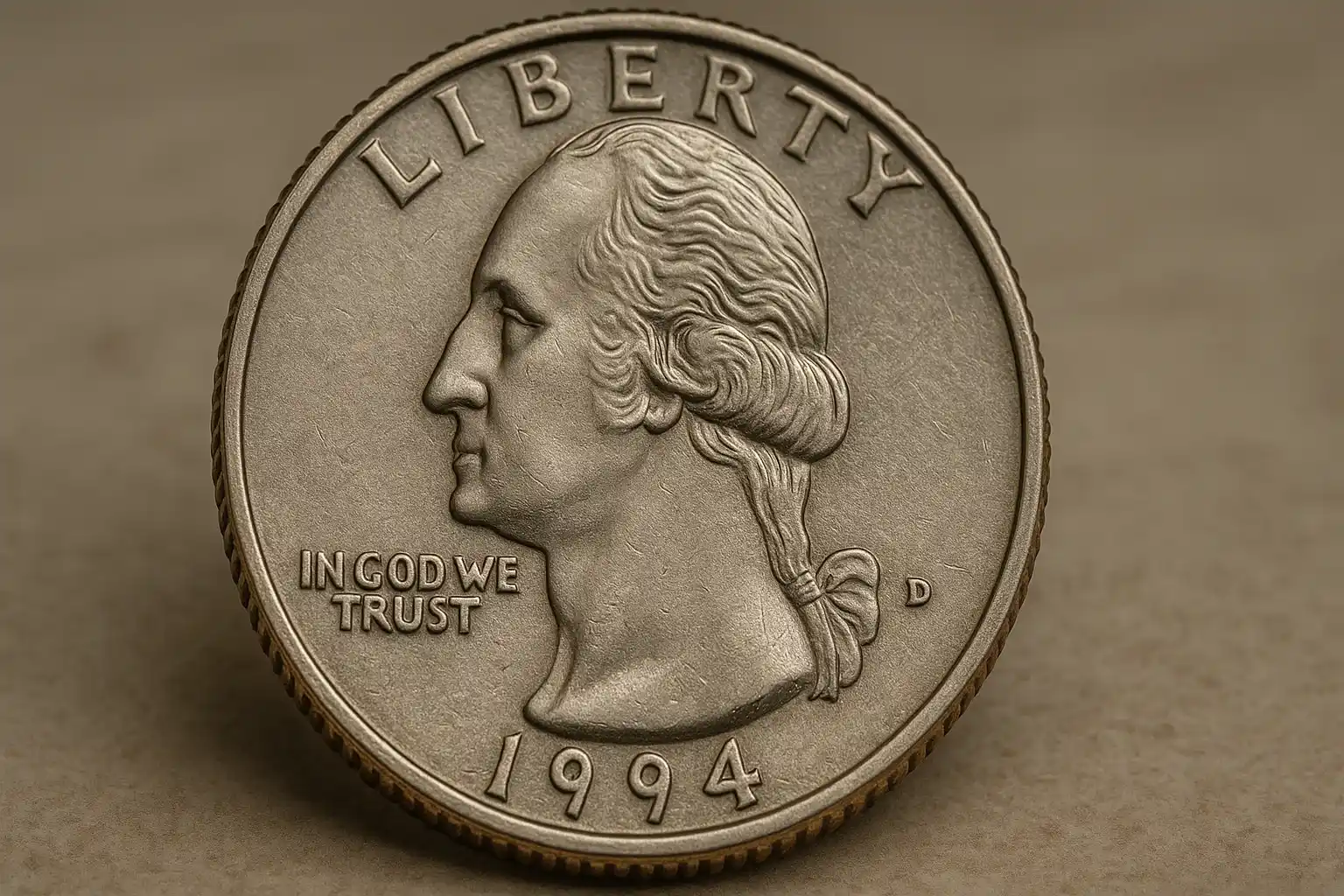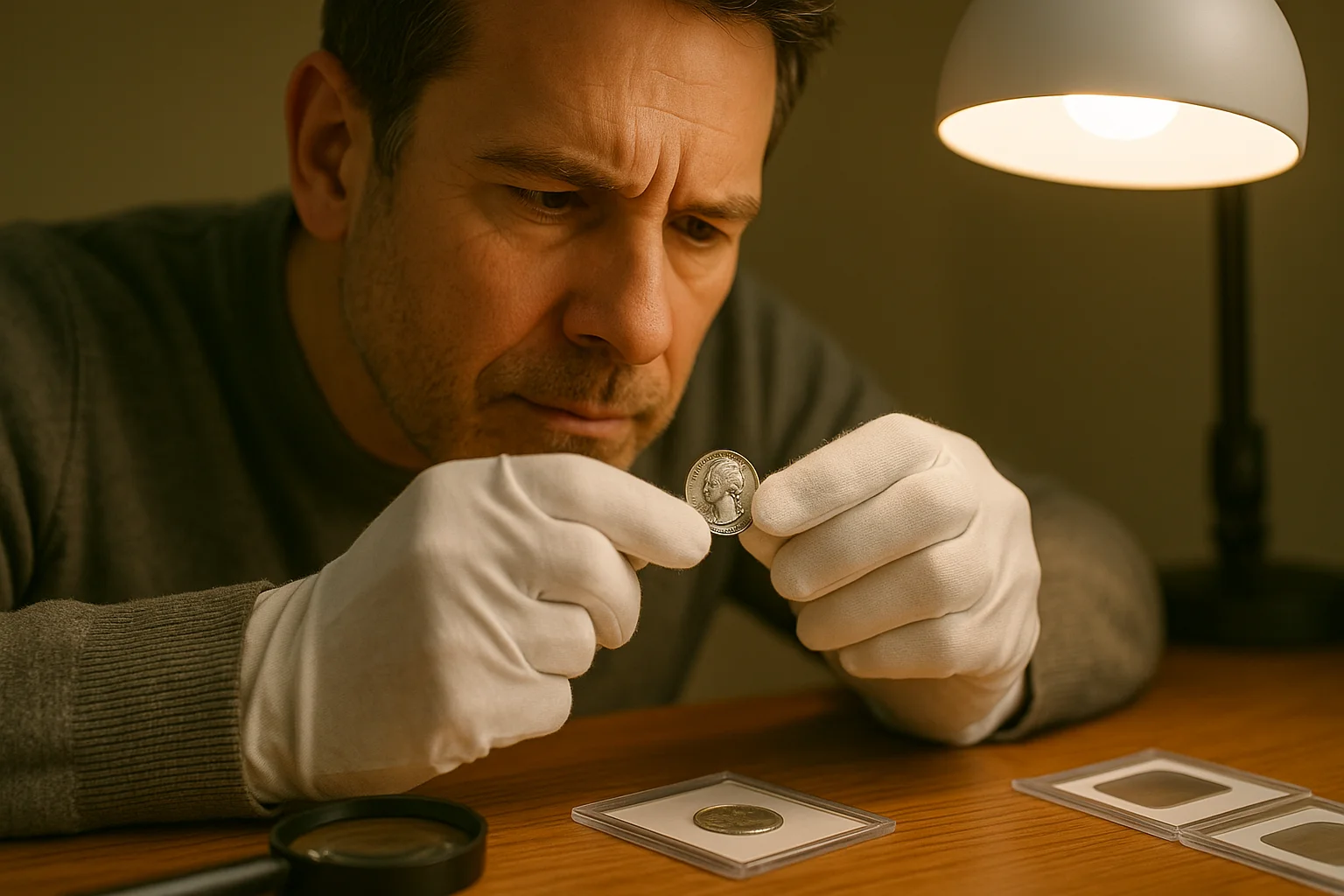Most people rarely stop to look closely at the coins that pass through their hands every day. Quarters, in particular, are often tossed into change jars, parking meters, or vending machines without a second thought. But every now and then, someone notices a quarter that looks unusual: maybe the date feels older than expected, the design on the back is surprising, or there’s a tiny mark they haven’t seen before. That curiosity often leads to the same question: who is on the quarter coin, and what makes some of them so different?
The simple answer is George Washington has been the face on the quarter’s obverse (the “heads” side) since 1932. Yet, that’s only the beginning of the story. The reverse has seen dozens of designs, each one telling a piece of American history.
For beginners, quarters are more than just spare change, as they are one of the easiest and most affordable entry points into coin collecting. And the best part? Some rare pieces can be worth hundreds or even thousands of dollars, hiding in plain sight. Let’s go step by step through what to look for, so you can start seeing your quarters not as everyday coins.
Step 1. Look at the Obverse: The Familiar Face of Washington
As you know, the obverse of every U.S. quarter shows George Washington. His portrait was first introduced in 1932 to mark the 200th anniversary of his birth. Sculptor John Flanagan designed the original image, and his initials “JF” can still be found on the coin if you look carefully near Washington’s neckline.
Over the years, the portrait has been updated, but Washington’s presence has never left. Here are a few highlights worth knowing:
1932 Original: The very first Washington quarters were released in Denver and San Francisco. Because of their low mintage, the 1932-D and 1932-S are now rare and valuable.
Bicentennial Quarters (1776–1976): To celebrate the 200th birthday of the United States, the quarters carried double dates — “1776–1976.” While Washington’s portrait stayed on the front, the reverse showed a drummer boy, making these coins easy to spot.
Modern Redesign (2022–present): Washington now faces right instead of left (part of a new design era). It may seem like a small change, but collectors notice these shifts immediately.
Tip for beginners: Hold the quarter close and pay attention to the details on Washington’s face, hair, and the date below. Subtle differences can signal if your coin belongs to a special issue.

Step 2. Flip the Coin: The Reverse Changes the Story
While the obverse has stayed relatively consistent, the reverse side of quarters has been a playground for design innovation. In fact, many collectors fall in love with quarters because of the variety of reverses they can find. Here are the major programs you should know:
Series | Years | Key Features | Examples |
50 State Quarters | 1999–2008 | Each state had a unique design, celebrating local history and culture. The program was groundbreaking and attracted millions of new collectors. | Delaware’s Caesar Rodney on horseback, Hawaii’s King Kamehameha |
America the Beautiful Quarters | 2010–2021 | Focused on national parks, forests, and monuments, showcasing America’s natural beauty and landmarks. | Yosemite, Yellowstone, Grand Canyon |
American Women Quarters | 2022–2025 | Honors influential women who shaped U.S. history in different fields, e.g., in literature, science, and civil rights. | Maya Angelou, Dr. Sally Ride |
Collector’s advice: Even if you don’t see yourself as a “serious” numismatist, it’s worth saving unusual reverses. Many people have completed full sets just by checking their change carefully.
Step 3. Find the Mint Mark: The Hidden Clue
Mint marks are tiny letters that show where a coin was produced. They’re usually found under the date or near the portrait. While they may seem insignificant, they can dramatically change a coin’s value.
P – Philadelphia Mint
D – Denver Mint
S – San Francisco Mint
For example, the 1932 quarters produced in Denver (1932-D) and San Francisco (1932-S) had extremely low mintages — fewer than half a million each. Today, these are among the most coveted Washington quarters.
Practical trick: Always glance at the mint mark when you pick up a quarter. It only takes a second, and you might be holding something far more valuable than pocket change.
Step 4. Hunt for Errors and Rare Varieties
Some of the most valuable quarters aren’t rare because of their age or low mintage, but because of mistakes during the minting process. These “errors” and “varieties” can be incredibly exciting to find. In the table below you can see the famous examples that every beginner should know about:
Year | Variety / Error | Feature | Approximate Value* |
1932-D and 1932-S | Rare first issues | Low mintage (under 500,000) | $100–$1,000+ |
1970-S Proof | Doubled Die Obverse | Doubling on “IN GOD WE TRUST” | $1,000+ |
1983-P | “Spitting Eagle” | Die crack creates line near eagle’s beak | $20–$100 |
1999-P Delaware | Spitting Horse | Die crack near horse’s mouth | $20–$200 |
2004-D Wisconsin | Extra Leaf (High/Low) | Extra leaf on corn stalk | $100–$500+ |
2005 Kansas | “In God We Rust” | Missing “T” in TRUST | $50–$150 |
*Values are approximate and depend on condition and current market demand.
So, hold your quarter at an angle to the light and slowly rotate it. Subtle cracks, doubling, or missing letters often become visible this way.
Step 5. Judge the Condition: Why Two Identical Quarters Aren’t Equal
Two coins of the same year and mint mark can have very different values depending on their condition. Collectors use grading systems to describe this, but beginners can start with three simple categories:
Circulated: These coins have been used in everyday transactions. They usually show wear and tear, which lowers their value.
Uncirculated: These coins look fresh from the mint, with sharp details and no obvious signs of wear. They are usually worth more.
Proof: These are special collector’s coins with a mirror-like finish. They’re not meant for circulation and usually command higher prices.
Storage tip: Use coin holders, albums, or flips to protect your coins. Never clean them with abrasive materials, as cleaning can actually reduce their value.

Why Quarters Make the Perfect Starter Collection
For someone new to collecting, quarters are the ideal gateway:
They’re everywhere. You can find them in everyday change without spending extra money.
They tell a story. From Washington’s legacy to state histories and women’s achievements, every design connects to something bigger.
They can be valuable. Even a handful of pocket change could contain a rare mint mark, error, or variety.
They’re fun to organize. Many collectors enjoy building albums, comparing mint marks, or setting goals like completing all 50 states.
And perhaps the most rewarding part is that you never know what’s going to turn up next. Every time you get change at the grocery store, you’re essentially receiving a mystery grab bag of history.
A Different Way to Look at Change
Most people handle quarters every single day without giving them a second glance. But when you pause and actually look, these coins can turn into small surprises that make ordinary moments a bit more interesting.
Collecting quarters isn’t about chasing money or building a museum-level collection. It’s about noticing details, enjoying small discoveries, and holding a piece of history that traveled through countless hands before yours. Even a scratched or faded coin can carry a story worth keeping.
And if you’re just starting, you don’t have to do it alone, you can refer to simple tools like Coin ID Scanner to easily recognize unusual coins and keep track of what you’ve found. The Coin ID Scanner app makes the hobby easier to explore step by step.
The next time you get change at the store, don’t rush to spend it. Take a closer look — you might find more than just twenty-five cents.


